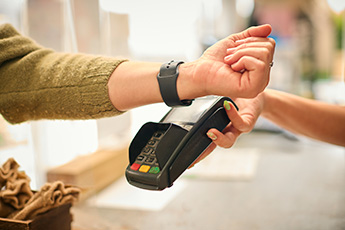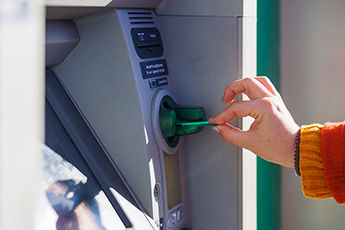In 2015, Apple Watch first launched a partnership with Citibank. Understandably, it was believed that this was the advent of wearable payments, as banks of all sizes would pair up with technology companies to offer payment options to consumers. A decade on, and those wearable payment options are few and far between, even as the connected market for these technologies has exploded with rings, watches, eyewear, and more. The wearable payments market is not a total snoozefest. Four years ago, New York-based Quontic Bank announced that it would offer a “tap-to-pay” mobile payment ring. The $1.4B-asset bank, also an early leader in offering a Bitcoin rewards card, introduced its mobile payment ring in April 2022 — a “piece of functional jewelry that serves as a wearable debit card,” according to the bank’s press release at the time. Despite the early hype, the payment option did not seemingly find a large following. It was, by most accounts, still viewed as a novelty. With wearables becoming more integrated into daily life, the conditions may finally be right for broader payment adoption. For community financial institutions, several trends stand out:
- Growth in the contactless and wearable payments market overall. The contactless payments market as a whole has blossomed in recent years, largely due to the pandemic and consumer concern for “touching” payment terminals. While wearable payments have not kept pace with the broader contactless market (at least here, in the United States), industry prognosticators envision rapid growth for wearable payments technology. The global wearable payment device market is predicted to grow to more than $80B by 2028, from just over $10B in 2020, according to Fior Markets.
- Consumer sentiment toward wearables. Wearable tech is expanding quickly beyond smartwatches into rings, bracelets, eyewear, and clothing, as well as implantable wireless connected payments technology. The global wearable sensors market is expected to grow from $1.4B in 2024 to more than $6.3B (CAGR of more than 18%), according to Straits Research. Allowing payment through your watch, ring, or sunglasses is just the next step in providing accessibility. Just as today’s consumers have come to expect “always-on” Internet access, they are quickly coming to accept always-ready and available means to pay for goods and services. As people grow more comfortable using their health and fitness monitors, depending on their smartwatches and other devices, their trust and use of these devices for the more sensitive use of payment will develop.
- Global banks embracing wearable payments. Much as the industry may not want to admit it, financial institutions are driven, like all businesses, to follow where other companies are going. While wearable payments partnerships may have stalled briefly in the US, they are taking off in other countries. Australia’s Westpac Bank introduced its own PayWear product line, whereby customers can make payments through the NFC chips in their wristbands or other fashion accessories. The bank even offered the low-profile “Centsitive Patch…a discreet ‘out-of-sight’ wearable option … Add it to the inner sleeve of your ski or music festival jacket and simply reach to tap and pay with it,” according to the bank’s website. Similarly, Nordea Bank offered contactless payment via smartwatch, working with other Nordic companies like Triwa and Ur, and partnering with Mastercard partner Fidesmo. Most recently, Premier Bank in Somalia announced its own “tokenized-passive payment wearables” offering last October.
- Appeal to younger, digital-native consumers. Young Millennials and Gen Z have grown up using platforms like PayPal, Venmo, and Zelle — tools that made sending and receiving money as easy as sending a text. This generation now expects payment to be seamless, instant, and embedded in their everyday devices. As wearables become more capable, many are ready to take the next step: using rings, watches, and fitness trackers to pay. Younger consumers are more expectant of instant and digital payment options. More than two out of five are open to using smartwatches.
As wearable technology continues to evolve, the potential for wearable payments is becoming increasingly clear. While adoption in the US has been slower than anticipated, the global market and consumer expectations are rapidly shifting. Community financial institutions have a unique opportunity to position themselves as innovators by embracing wearable payment solutions. By tapping into the growing demand for convenience, the expansion of wearable devices, and the preferences of younger, tech-savvy consumers, banks can stay ahead of the curve. The future of payments is closer than ever — literally on our wrists, fingers, and even in our clothing. Exploring wearable payment solutions may offer financial institutions a chance to stay aligned with changing consumer expectations and broader industry trends.




